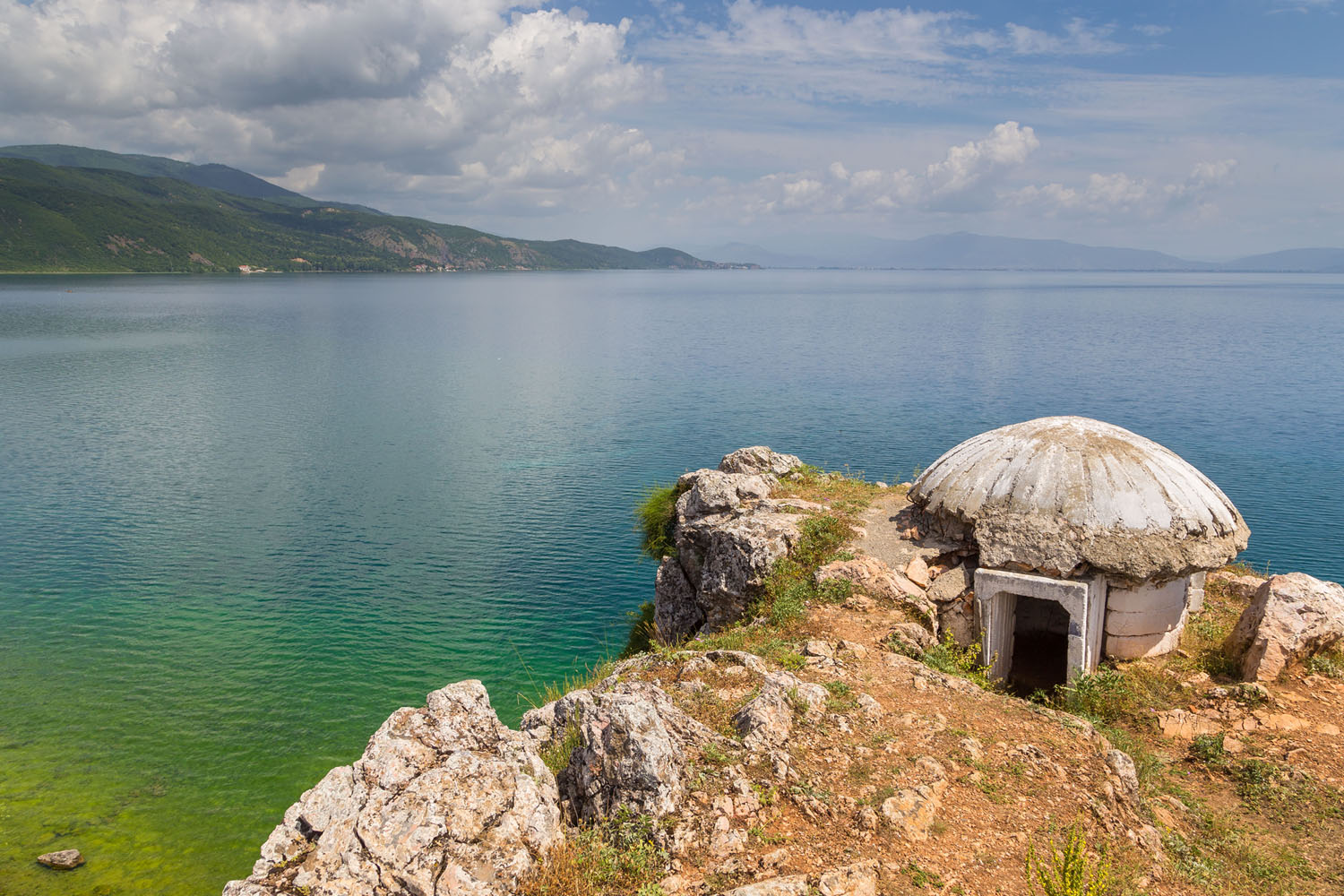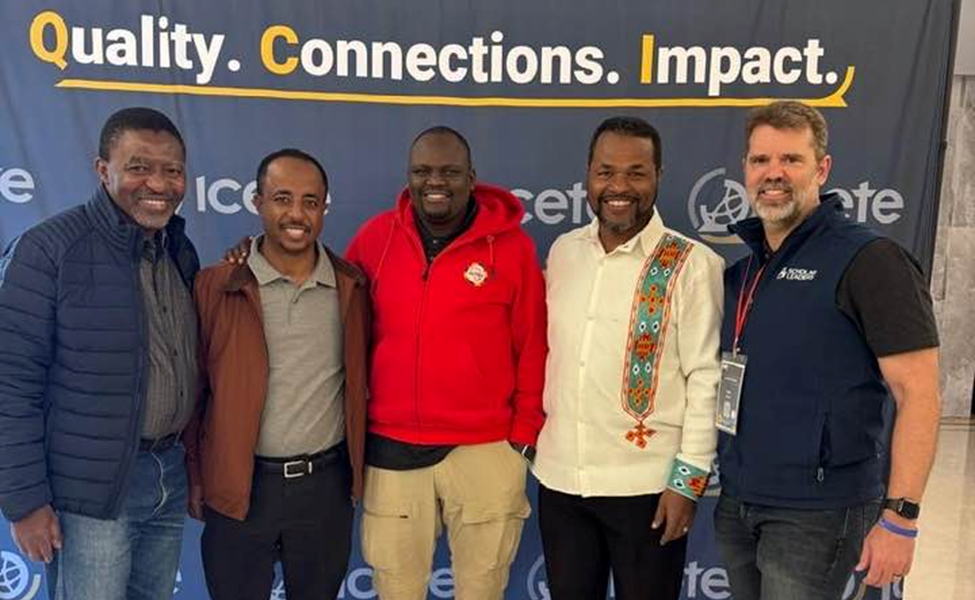
A Bunker Mentality
March 11, 2025What are we preparing for?
The country of Albania is littered with bunkers.
They’re everywhere. In cities, out in the countryside, next to highways, on beaches, next to government buildings. You can’t go for a walk anywhere without seeing at least one rounded concrete dome sticking out of the ground. There are more than 173,000 bunkers in Albania, and that just what’s left after many of them were destroyed. When Communism fell in 1991, there were an estimated 750,000! The official symbol of Albania is the two-headed eagle depicted on the flag, but the country’s unofficial symbol is the concrete bunker.
Why are there so many bunkers? Back in the 1970s and 80s, the country’s Communist dictator was convinced America and its European allies were going to attack the Soviet Union, and he figured a good way to do it would be to sail across the Adriatic Sea from Italy and invade through Albania. So he ordered the building of hundreds of thousands of bunkers to repel the invaders. Most were small, with just enough room for one or two soldiers to hunker down in and shoot out at the enemy. Others were much bigger, with beds and supplies to keep military officers and government officials and their families safe through a hypothetical war.
Each bunker cost around $2,000 to $3,000 to build—that’s around $12,000 in today’s dollars. You can do the math. $12,000 times 750,000 bunkers. The total cost was staggering. In many ways, Albania’s economy has still not recovered. The government spent an insane amount of money preparing for an invasion that never happened.
This is all interesting historical trivia, but it does make me ask the application question: What are we preparing for? And what is the visible evidence in our lives that speaks to how we’re spending our time, creativity, and emotional energy?
Are we preparing a life of spiritual richness? Or are we fruitlessly spending resources toward imaginary outcomes? Are we living in such a way that we will be prepared and eager to meet the Lord at the end of life (2 Tim. 4:6-8)? Or are we pursuing an imaginary fountain of youth?
There’s a whole sermon series here, probably. We certainly do want to be prepared in life! That’s biblical and wise and good. But it’s important to make sure we’re preparing for the right things so that our lives can be characterized by real fruit and not decaying bunkers.
Here’s what’s happening.

What’s Next for Theological Education?
Speaking of preparation, last week’s ICETE conference was focused on the future. For several years, global ministry leaders have been thinking about the need for theological education outside the seminary context. As the church continues to grow in the non-Western world—very rapidly in some places—the gap between the number of local churches that need pastors and the number of pastors who have received at least some training is widening. THF partner Mesa Global refers to this as the “global training gap.” To make matters worse, even if every student currently studying in seminary were to graduate today and become a pastor immediately, that would satisfy only something like one percent of the global need. Seminaries around the world are already facing rising costs, leading to enrollment shortages because students can’t afford to pay increasing tuition. And many church leaders who would like to receive training are already engaged in vocational ministry of some kind and can’t put their lives on hold to move to a campus for three or more years. Clearly solid theological training needs to be available through other means. That’s where the International Council for Evangelical Theological Education (ICETE) comes in. By providing a global forum for formal institutions like seminaries and nonformal training ministries to engage, strategize, and collaborate, ICETE is helping to define the future of theological education that will, in time and with God’s help, begin to finally close the training gap so that more churches can have theologically trained pastors.

Partner Spotlight
Last week I wrote briefly about Afrim Karoshi and Albanian Digital Connection. I got to spend a good amount of time with Afrim while I was in Durrës and Tirana last week, and I wanted to give a little more context on his ministry in Albania. I first met Afrim at a conference in Hungary two years ago. He had just left Cru after two decades of serving in campus ministry and was launching a new evangelistic effort focusing on social media. When he told me he was also planning to do some publishing, I told him THF might be able to help. We followed that initial meeting up with a couple of Zoom meetings, and Afrim visited Tyndale the following year along with his wife. They brought copies of a couple of books Albanian Digital Connection had just published with help from a THF grant awarded a few months earlier. Afrim’s brother owns a print-on-demand shop in Tirana, so Afrim was able to get his books printed for a good price. I visited the shop on Saturday and learned that most books in Albania will sell maybe a few hundred copies. There just isn’t a culture of reading in Albania in the post-Communism era. So publishing—especially Christian publishing—is a labor of love. Afrim knows his ministry is never going to be self-sustaining. He has to spend a portion of his time every year fundraising, including building relationships with foundation leaders and writing grant proposals. To him, it’s worth it because although the evangelical church in Albania is tiny, it’s growing, and Christians there need resources. Albanian Digital Connection has a growing social-media presence, which gives Afrim a platform to reach people online with the gospel. Albanians need Jesus! And Afrim wants to introduce as many of them to him as possible while providing resources needed for the ongoing growth of the church.

No More Initiative Update
I’ve written before about the No More Initiative, a collaborative effort to equip global scholars and theologians to address sexual misconduct in the church. Because this effort is inherently theological, and because it’s addressing a problem that unfortunately exists on seminary campuses all over the world, ICETE director Michael Ortiz asked the No More team to lead an Impact Group on this issue at last week’s conference. Since THF is a participating partner, I sat in on the meetings. It was one of the smaller ICETE Impact Groups—just 13 to 15 people, depending on the day—and we got off to kind of a slow start. The technology wasn’t cooperating, so we weren’t able to view slides showing the extent of the problem and proposed solutions. The heat hadn’t been turned on in the room we were meeting in, and it was freezing! But the group made the best of it, and by the end of the third day, people were getting excited about the possibilities. Several participants volunteered to serve on regional working groups, and one woman who leads an anti-trafficking organization called us to pray and ask the Lord to move mightily through this initiative on behalf of the vulnerable. It was a powerful moment. This was always going to be a slow process—change is hard, and everyone involved in the project has demanding day jobs. But we’re making steady progress on the second-year goals for the No More Initiative. By the end of year three, the hope is that we will have designed theologically based curriculum that can be translated and contextualized for use in seminaries all around the world.

Thinking Polycentrically
One of the ministry leaders I met with at ICETE was Joe Handley, who leads a training organization called A3 (formerly called Asian Access). Joe is seminary-trained, but his focus is on the nonformal side of theological education. A few years ago, Joe wrote a book called Polycentric Mission Leadership as sort of a follow-up to another book called Polycentric Missiology, written by a theologian named Allan Yeh. Allan’s book was about the five major global mission conferences that took place in 2010. He was one of the first people to point out that global mission is no longer taking place “from the West to the rest” but is now happening from everywhere, to everyone (polycentrically). Joe’s book continued on that same theme, arguing that mission leadership is increasingly polycentric as well. Whereas the traditional leadership model focuses on a single, centralized leader, the polycentric leadership model is more distributed and is characterized by six key traits: charismatic, collaborative, communal, relational, entrepreneurial, and diverse. I’ve read both books and have had multiple conversations with both authors as I’ve been thinking about what “polycentric philanthropy” could look like. In our increasingly interconnected world, doesn’t it make sense that generosity should be globally distributed along with missiology and leadership? What if, instead of relying on funding from the West, more and more mission efforts could be locally funded? That’s why I always ask ministry leaders about their local support structures, and why I’m excited about partnering with organizations like Generosity Path who are working on this very issue. Maybe there’s another book idea here—we’ll see!
That’s it for this week’s briefing. Please send any questions, comments, and more ideas about polycentrism to [email protected]. I send out this email resource most weeks primarily for a Tyndale audience, but you should feel free to share it with others who may be interested, inside or outside of Tyndale. Thanks for continuing to pray for and support our partners around the world.
Jeremy Taylor
President | Tyndale House Foundation
The THF Weekly Briefing provides information about significant events happening in the wide universe of Tyndale House Foundation partner organizations as well as an occasional peek behind the scenes of THF’s operations. It is available to anyone at Tyndale who’s interested in learning more about the Foundation side of the organization. Was this email forwarded to you? Contact [email protected] to be added to (or removed from) the distribution list.

